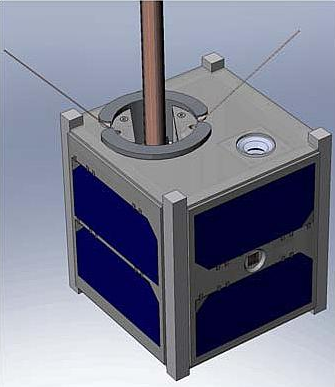DTUSat-2

DTUSat-2 – Danmarks Tekniske Universitet Satellite 2 – is a 1U demonstration satellite from Denmark to demonstrate the feasibility of tracking birds from space to provide data for improved understanding in bird migration patterns.
The system consists of the Ground Primary Payload System GPPL which is comprised of small transmitters that are mounted on birds to allow tracking from the Primary Payload subsystem on the DTUSat-2 spacecraft that is capable of receiving and tracking the 868MHz signals of the GPPL transmitters. The GPPL to PPL data link uses BPSK modulation for the transmission of small data packets that allow the identification of the bird and its position. The GPPL system uses a dipole antenna on the +Z face of the satellite and the digitized signal is provided to the onboard computer for storage and downlink to ground stations.
The GPPL ground based transmitters implement the latest miniaturization technologies to create an ultra small unit. GPPL uses a single 30mm² ultra triple junction solar cell with 28% efficiency to charge a battery to sufficient power levels for transmission during the migration payload. The GPPL use a 16-bit processor to propagate the orbit of the DTUSat-2 satellite to determine the time of ground passes for the exchange of data. This calculation is based on time and position solutions of a mini GPS receiver. When the satellite is in view, GPPL will activate the BPSK transmitter and start transmitting data at 30bit/s containing the last five position fixes that were stored onboard the sensor.
DTUSat-2 is outfitted with a Pico Camera that uses a CCD detector operating in the visible wavelength and using a Bayer filter to obtain color images. The camera has a resolution of 640 by 480 pixels with an 8-bit gray scale to be used to monitor the gravity gradient boom deployment and to obtain images of stars to check the performance of the attitude determination system.
Another payload tested on DTUSat-2 is a second generation sun sensor using a Micro-Opto-Electro-Mechanical-System delivering an angular accuracy of under one degree.
